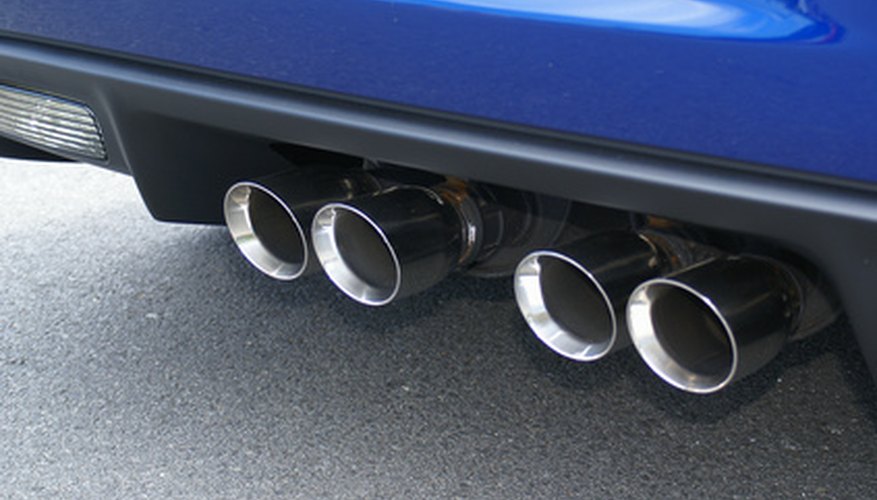Exhaust silencers, or mufflers, are placed in engines' exhaust systems to moderate the level of sound produced by altering the direction and speed of the exhaust gas flow. This has the effect of reducing noise, but can also depress the performance of a vehicle. Exhausts that have fewer silencers, or silencers that do not impede the flow of gas as much as others, will be louder, but can improve vehicle performance. Changing the exhaust silencing system that came with a car to a performance exhaust can increase your car's power.
Multi-Chamber Exhaust Silencers
Multi-chamber exhaust silencers are used in the majority of engines and control the noise production of the engine while creating reasonable back pressure levels that do not affect performance of the vehicle unduly. These silencers are used in naturally aspirated engines and in supercharged engines. They are formed of several chambers into which the gas flows sequentially before escaping.
Straight-Through Silencers
Straight-through silencers are used in turbocharged engines and some naturally aspirated engines. They pass gas through the centre of the silencer in a straight line, so the exhaust gas is not impeded as much as in a multi-chamber silencer. The effect of a rapid discharge of exhaust gas improves the car's performance, and still has an effect on noise levels.
Spark Arrestor Silencer
Spark-arresting silencers are fitted on engines that are to be used in areas where there is a serious risk of fire. This type of silencer both reduces noise level and removes sparks from exhaust gases before the gas is released. They contain a "spark trap," along with regular silencing chambers. Spark Arrestor Silencers can be added on to an existing engine. They are used in construction equipment, military vehicles, electricity generators, propulsion engines, oil rig equipment and gas compression equipment.
- Spark-arresting silencers are fitted on engines that are to be used in areas where there is a serious risk of fire.
- This type of silencer both reduces noise level and removes sparks from exhaust gases before the gas is released.
Shapes of Exhaust Silencers
In order to fit a wide variety of equipment, silencers can come in a number of shapes apart from the regular straight-line exhaust silencer. For example, a silencer can have exhaust gas entering from the top and exiting from the side and vice versa, and gas entering from the top of one end and exiting from the bottom of the other end.
Silencers can also have more than one inlet and outlet for exhaust gas if required. Silencers that are used in engines that are regularly handled, such as hospital equipment, can also have outer insulation to prevent burns from the exhaust heating the metal.
- In order to fit a wide variety of equipment, silencers can come in a number of shapes apart from the regular straight-line exhaust silencer.
- Silencers that are used in engines that are regularly handled, such as hospital equipment, can also have outer insulation to prevent burns from the exhaust heating the metal.
